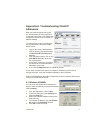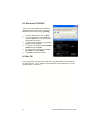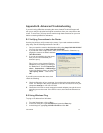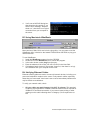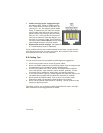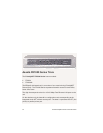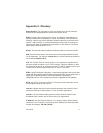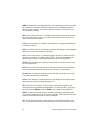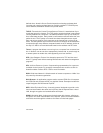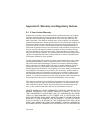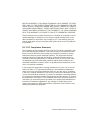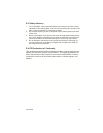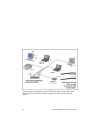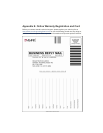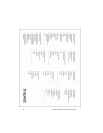
User’s Manual 59
defined rules. Asanté’s Secure Packet Inspection technology evaluates both
incoming and outgoing packets based on multiple conditions: TCP/UDP ports,
source address, destination address and packet states.
TCP/IP: Transmission Control Protocol/Internet Protocol. A standard set of pro-
tocols that govern the Internet. The TCP portion ensures that data is transmitted
correctly between two computers. The data transmitted is split up into small por-
tions called data packets. Each packet is confirmed as received before the next
packet is sent. The IP portion of controls how these data packets are moved
from one point to another. Each computer on the Internet has a unique IP ad-
dress. The data packets are moved from the source computer to the destination
computer through many different computers based on the IP address, similar to
the way U.S. Mail is sent and delivered based on the address and ZIP Code.
Telnet: A program that allows a user to log in to a computer from a remote loca-
tion. It allows a user at one site to transparently interact with, or pass through to,
a remote system at another site, while appearing as a local terminal.
UDP: User Datagram Protocol. An alternative protocol to TCP and also used
with IP. Typically used while accessing DNS servers and network management
programs.
URL: Uniform Resource Locator. Compact string representation for a resource
available via the Internet. For example, www.asante.com would be a URL for
Asanté’s website. Refer to RFC 1738 for more information.
WAN: Wide Area Network. A linked network of remote computers or LANs. Usu-
ally owned by the same organization.
Web Browser: An application program used to access HTML files. It interprets
the HTML file and presents the file in a graphical format. Examples include Net-
scape Navigator and MS Internet Explorer.
WEP: Wired Equivalent Privacy. A security protocol designed to provide a wire-
less local area network the same level of privacy that is expected from a wired
LAN, through encryption and authentication techniques.
WWW: Worldwide Web. A slang term for the browse-able Internet, referring to
the global, non-linear characteristics of the Internet. Users can access websites
around the world through the existence of millions of linked web pages.



